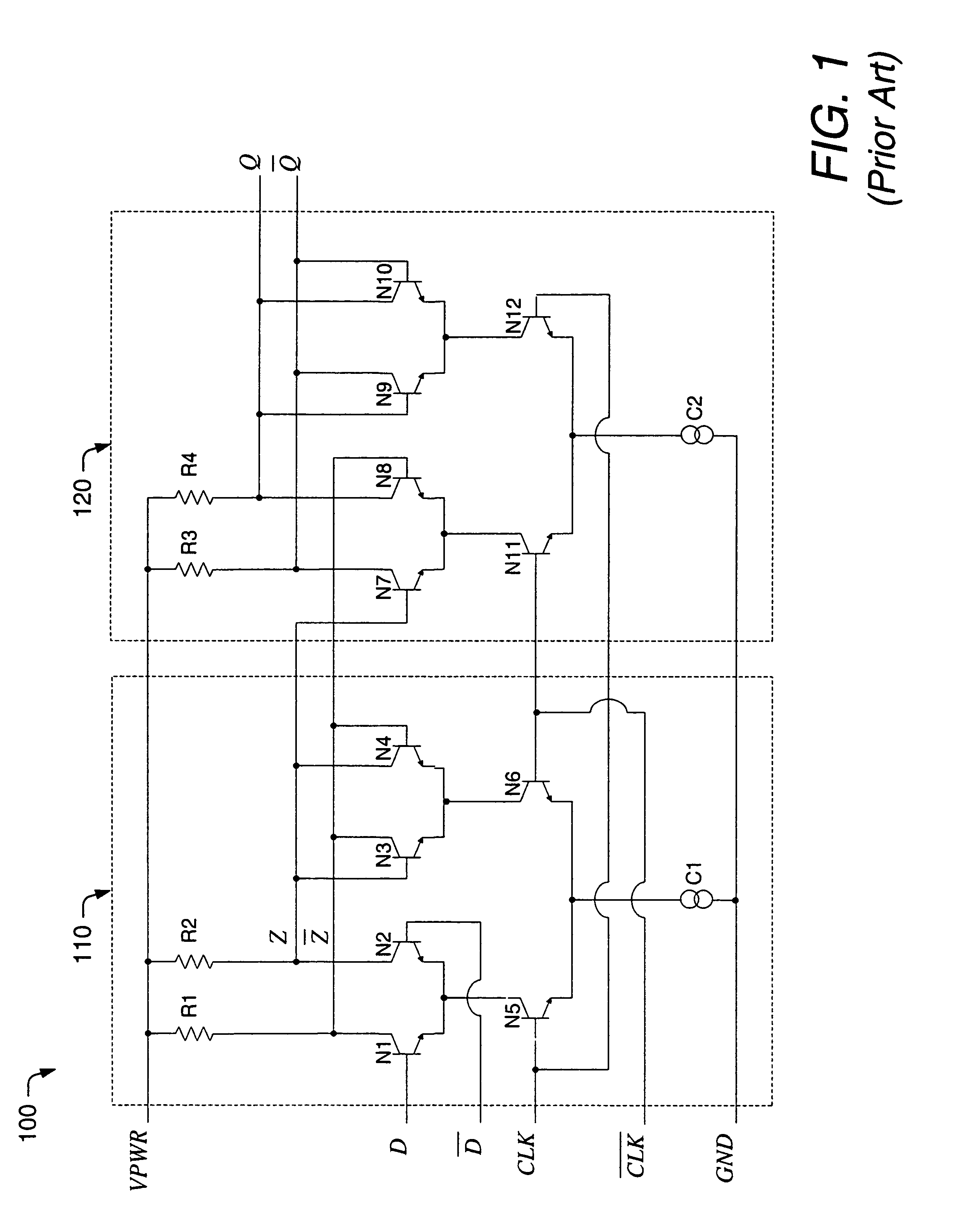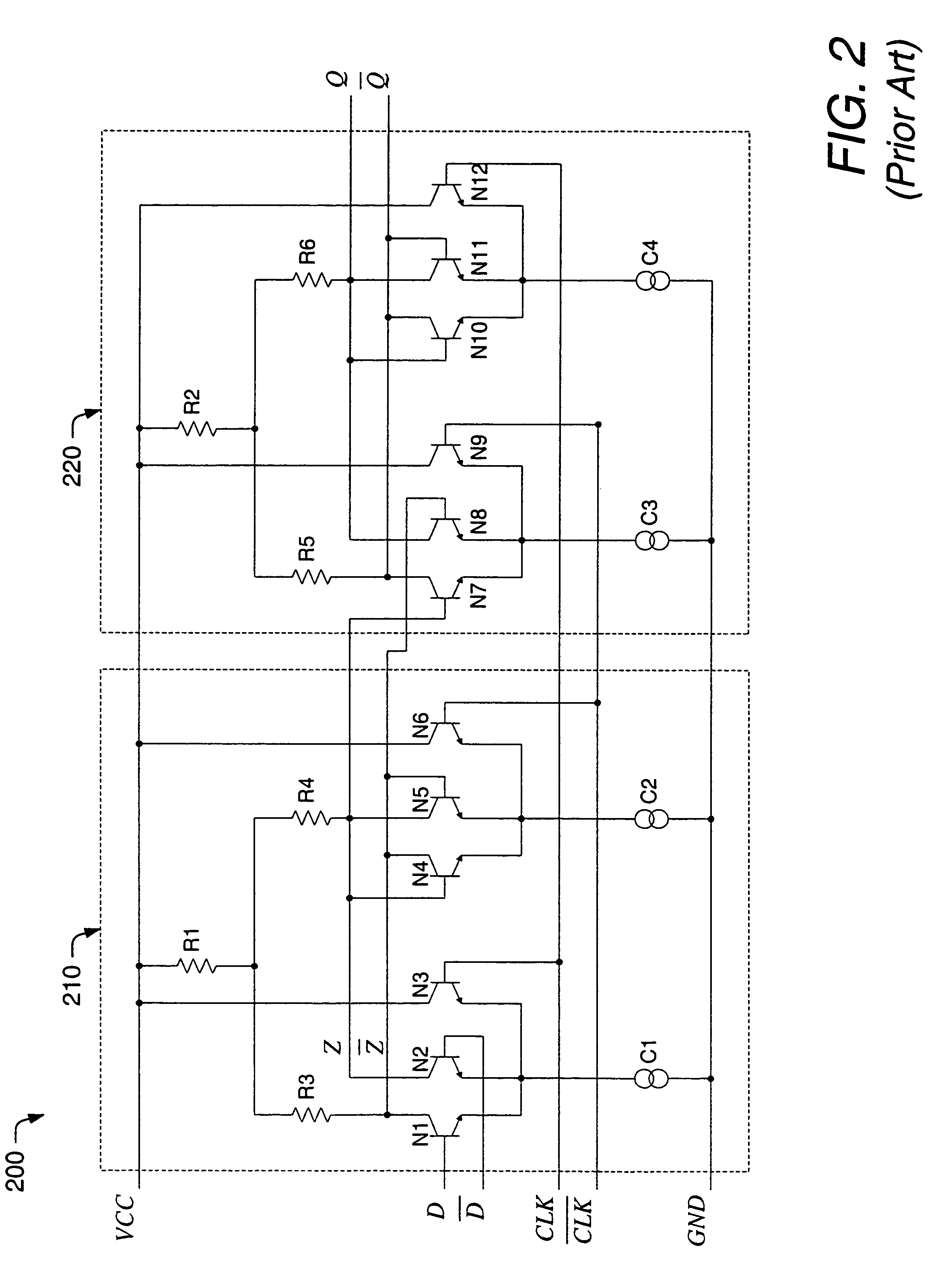Low voltage logic circuit with set and/or reset functionality
a logic circuit and functionality technology, applied in the field of low voltage logic circuits with set and/or reset functionality, flipflops and other logic circuits, can solve the problems of scaling supply voltage, not linear, and difficult to preserve high-speed operation at low supply voltage, so as to reduce the voltage swing of differential clock signals and reduce the effect of voltage swing
- Summary
- Abstract
- Description
- Claims
- Application Information
AI Technical Summary
Benefits of technology
Problems solved by technology
Method used
Image
Examples
Embodiment Construction
[0046]FIG. 2 illustrates another example of a conventional flip-flop circuit 200. Similar to the flip-flop circuit of FIG. 1, the current solution comprises master latch 210 and slave latch 220, each comprising six transistors. However, flip-flop circuit 200 includes no “stacked” transistors, and thus, includes no more than one base-emitter junction within any current path extending between the power supply (VCC) and ground (GND) nodes. For this reason, flip-flop circuit 200 may be generally configured for operating at relatively low supply voltages, such as those below approximately 1.8 volts. The concept of a low voltage flip-flop was first published in a paper written by Razavi, entitled “Design Techniques for Low-Voltage High-Speed Digital Bipolar Circuits,” and appearing in the IEEE Journal of Solid-State Circuits, Vol. 29, pp. 332–339, March 1994. Details of the implementation and operation of flip-flop circuit 200 may be found in the Razavi paper, which is incorporated herein...
PUM
 Login to View More
Login to View More Abstract
Description
Claims
Application Information
 Login to View More
Login to View More - R&D
- Intellectual Property
- Life Sciences
- Materials
- Tech Scout
- Unparalleled Data Quality
- Higher Quality Content
- 60% Fewer Hallucinations
Browse by: Latest US Patents, China's latest patents, Technical Efficacy Thesaurus, Application Domain, Technology Topic, Popular Technical Reports.
© 2025 PatSnap. All rights reserved.Legal|Privacy policy|Modern Slavery Act Transparency Statement|Sitemap|About US| Contact US: help@patsnap.com



